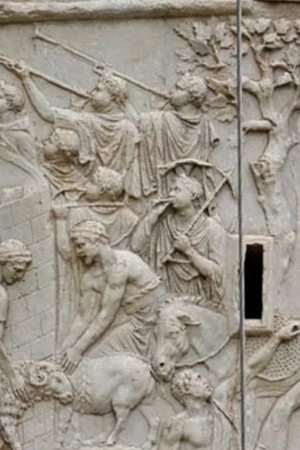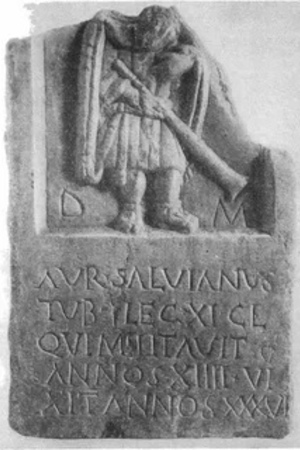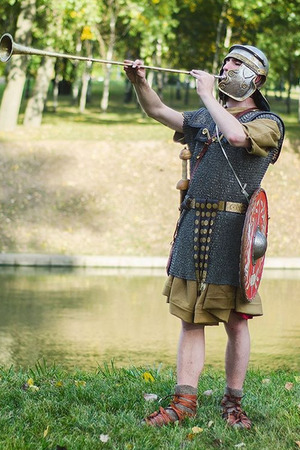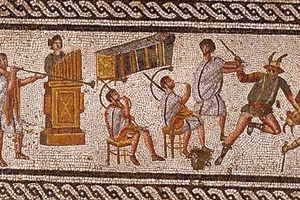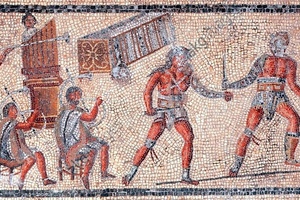Tubicen
Tubucene
Tubicen (Latin: tubicen) was a legionary trumpeter who played the tuba.
The tuba (Latin: tuba) was a musical wind instrument made of copper or bronze, consisting of a straight tube with a small bell at the end. It had a removable mouthpiece shaped like a cup. Unlike the buccina and cornu, the tuba had a higher pitch and was more effective for delivering sound commands during battle.
The tubicen most likely performed the same functions as other legionary trumpeters, such as the buccinator and cornicen. In the camp, they signaled the changing of the guard, the arrival of the legate, commander, or emperor, and drew the attention of the legionaries to the announcement of various decrees and death sentences. On the march, the tubicen typically gave general signals such as "onward," "to battle," "drop anchor," and so on. Tubices were considered junior officers, known as principales.
The tuba was not only played by the military; there are many depictions showing this instrument being played in peaceful settings, such as at gladiatorial games.
One distinctive feature of Roman military musicians, who were part of the legion's standard-bearing group, was an animal skin draped over their helmet and tied at the front with the forepaws across the chest. Their armament consisted of a gladius and a pugio. The tubicen typically wore lorica hamata or lorica squamata as armor, and they also carried a small round shield called a parma, attached to a belt at their side.
Related Topics
Legion Banner Group, Bucinator, Cornicen

 Gallery
Gallery






